Abstract
This article analyzes three methods used to forecast the transition of long-term care clients through a variety of possible home and facility placements and levels of care. The test population (N = 1,653) is derived from the larger population of clients admitted in 1978 to British Columbia's newly established Long-Term Care program. The investigators have accumulated 5 years of service-generated data on moves, discharges, and deaths of these clients. Results show that the first-order Markov chain with stationary transition probabilities yields a superior forecast to state-by-state moving average growth and state-by-state regression analyses. The results of these analyses indicate that the Markov method should receive serious consideration as a tool for resource planning and allocation in long-term care.
Full text
PDF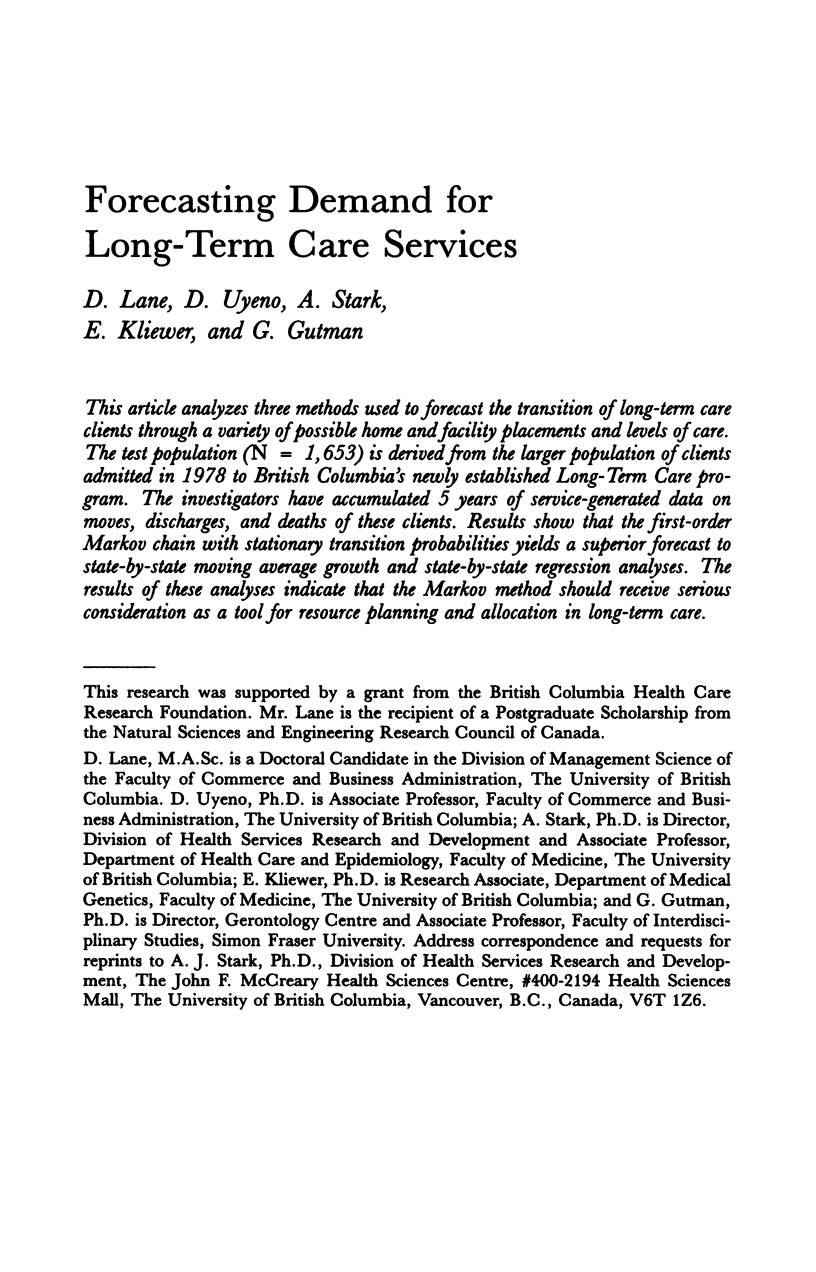






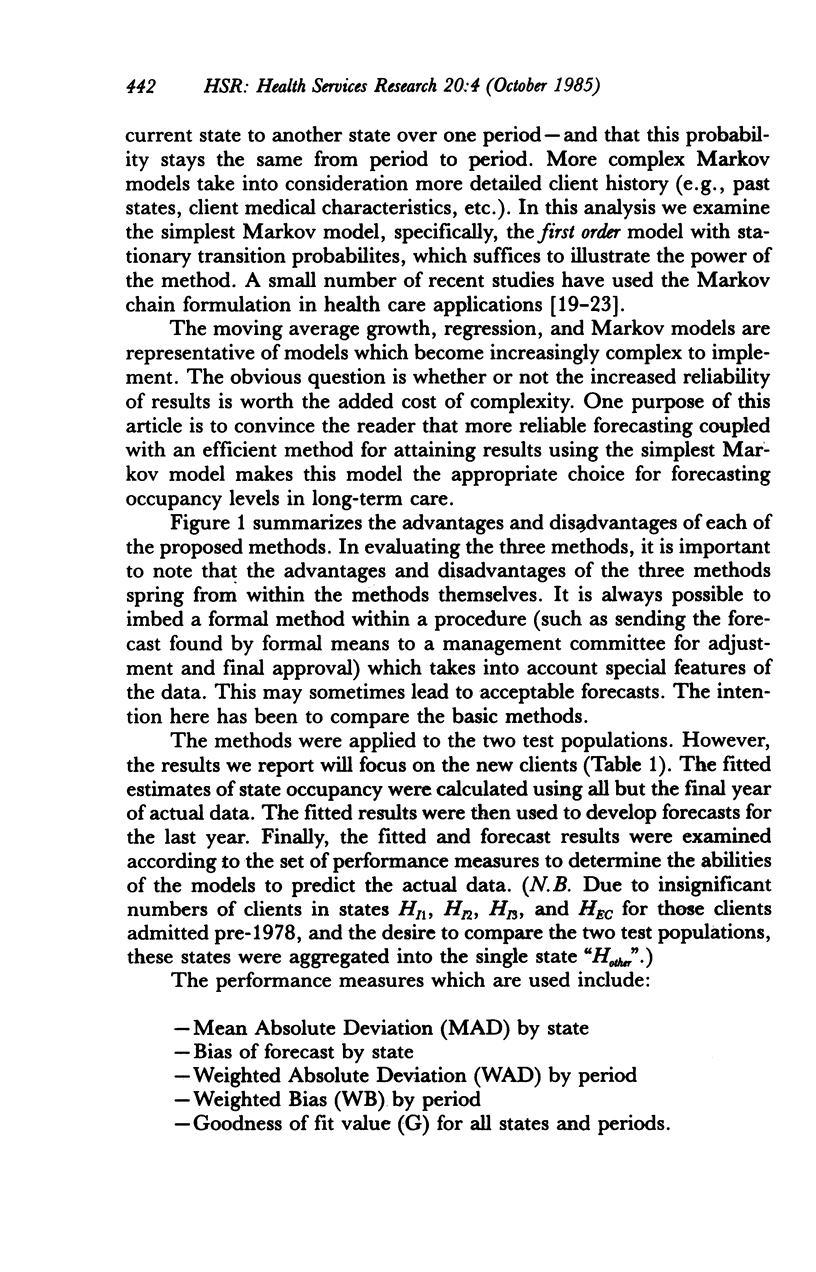
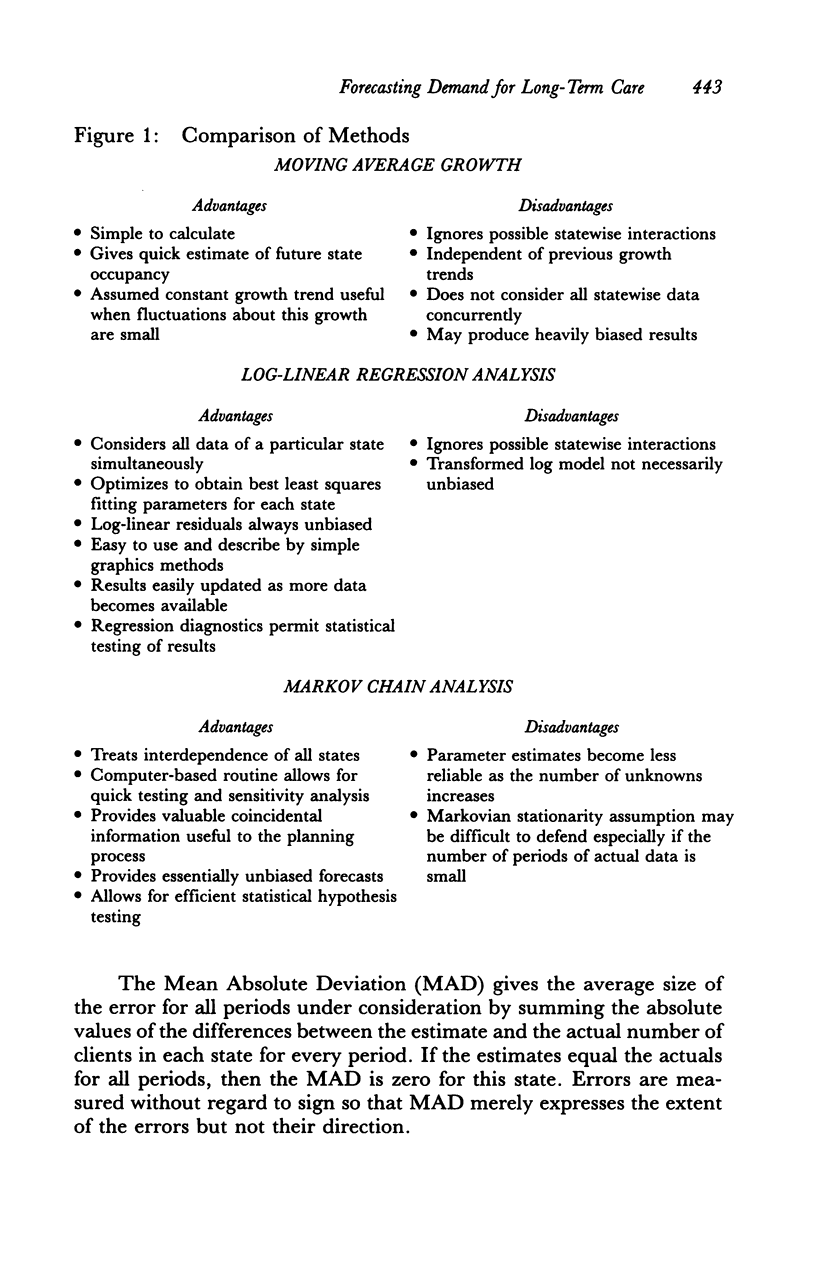
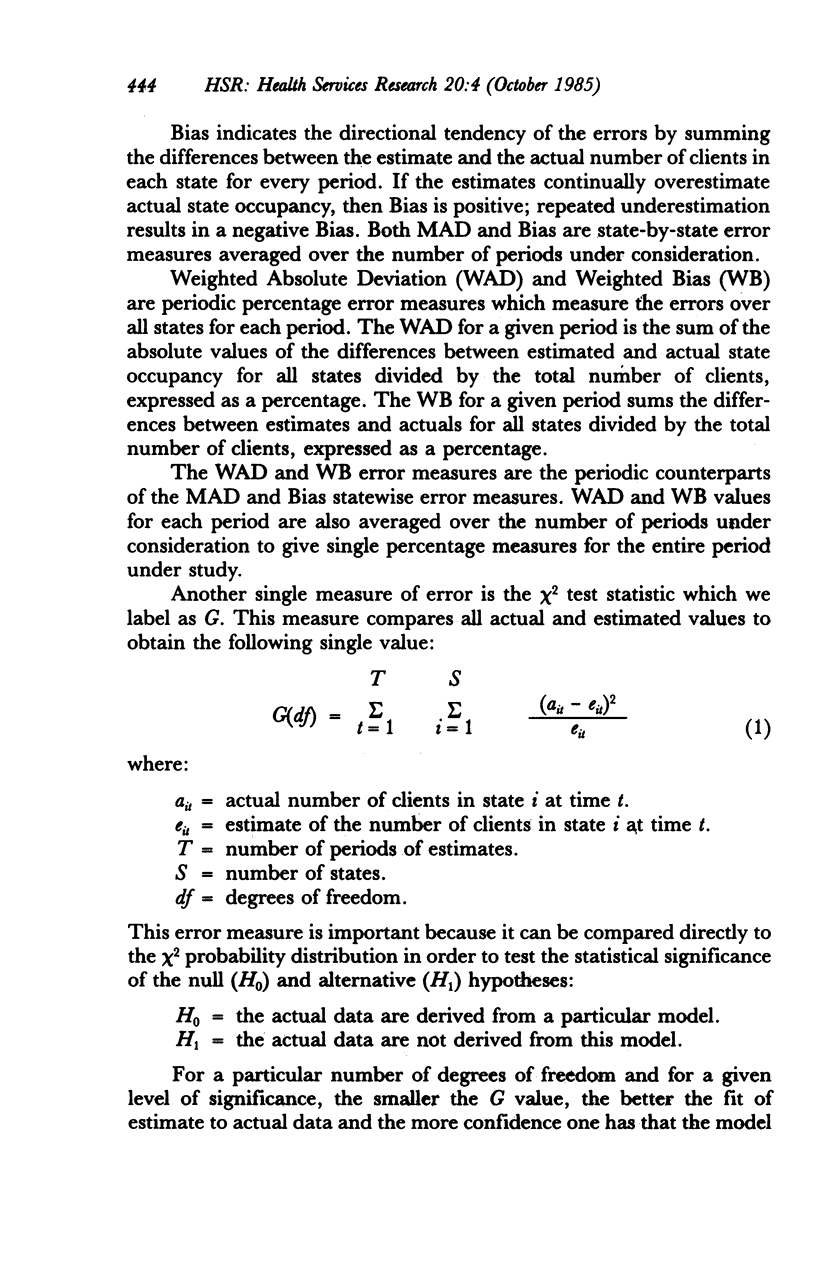

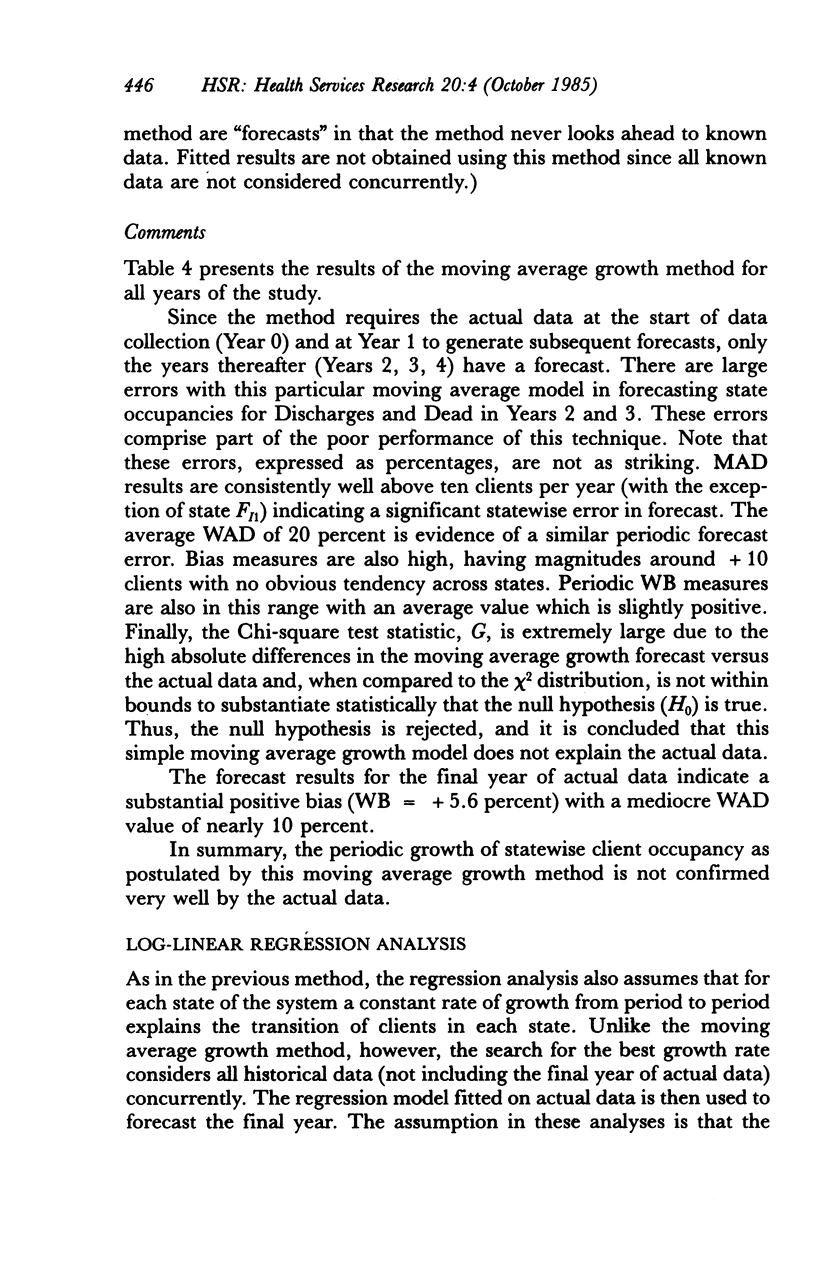
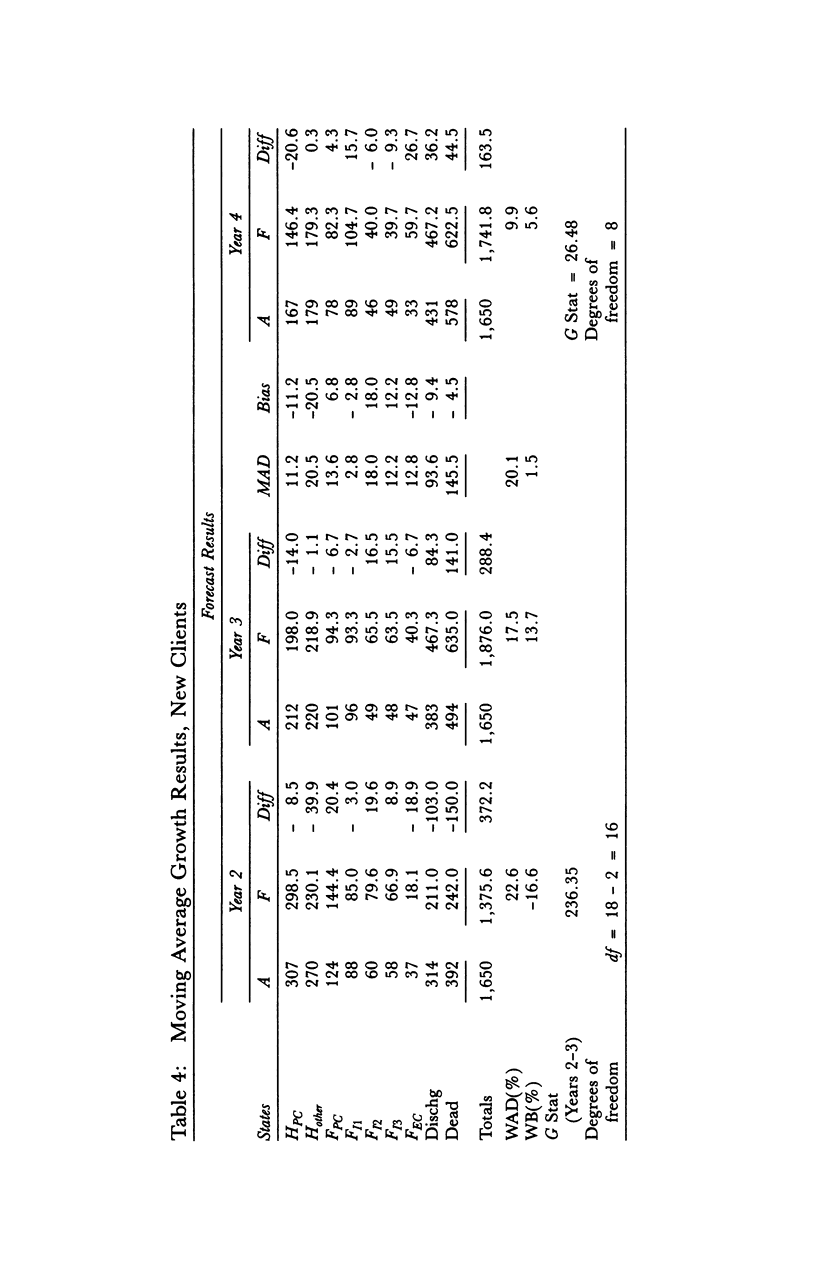
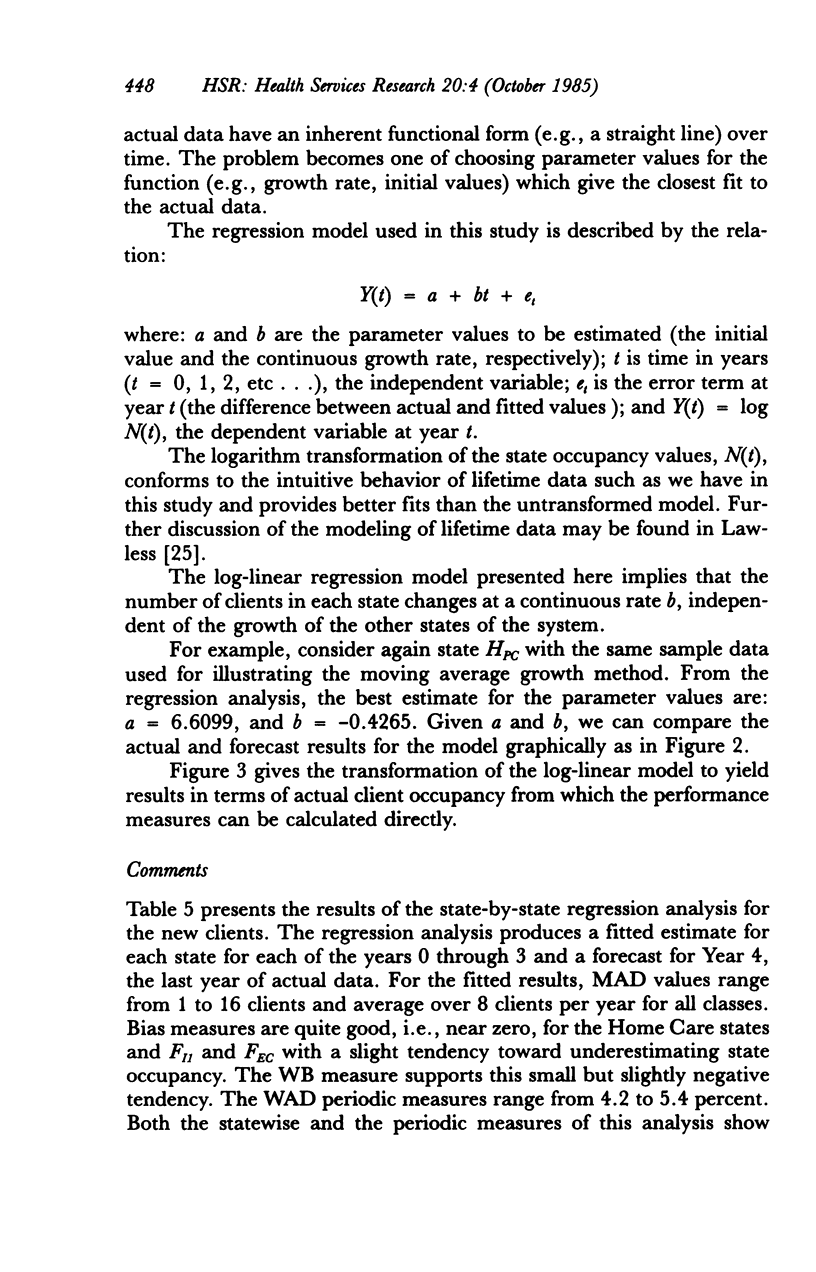
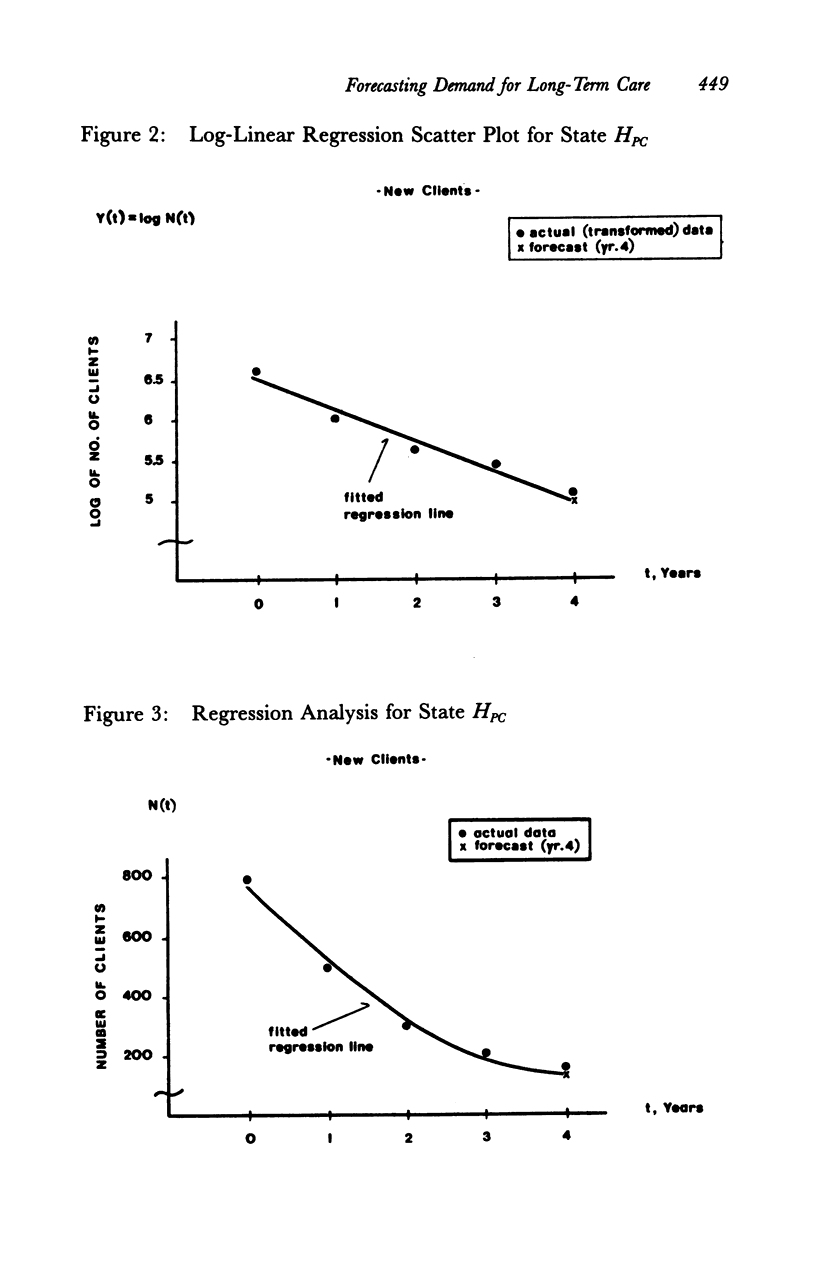
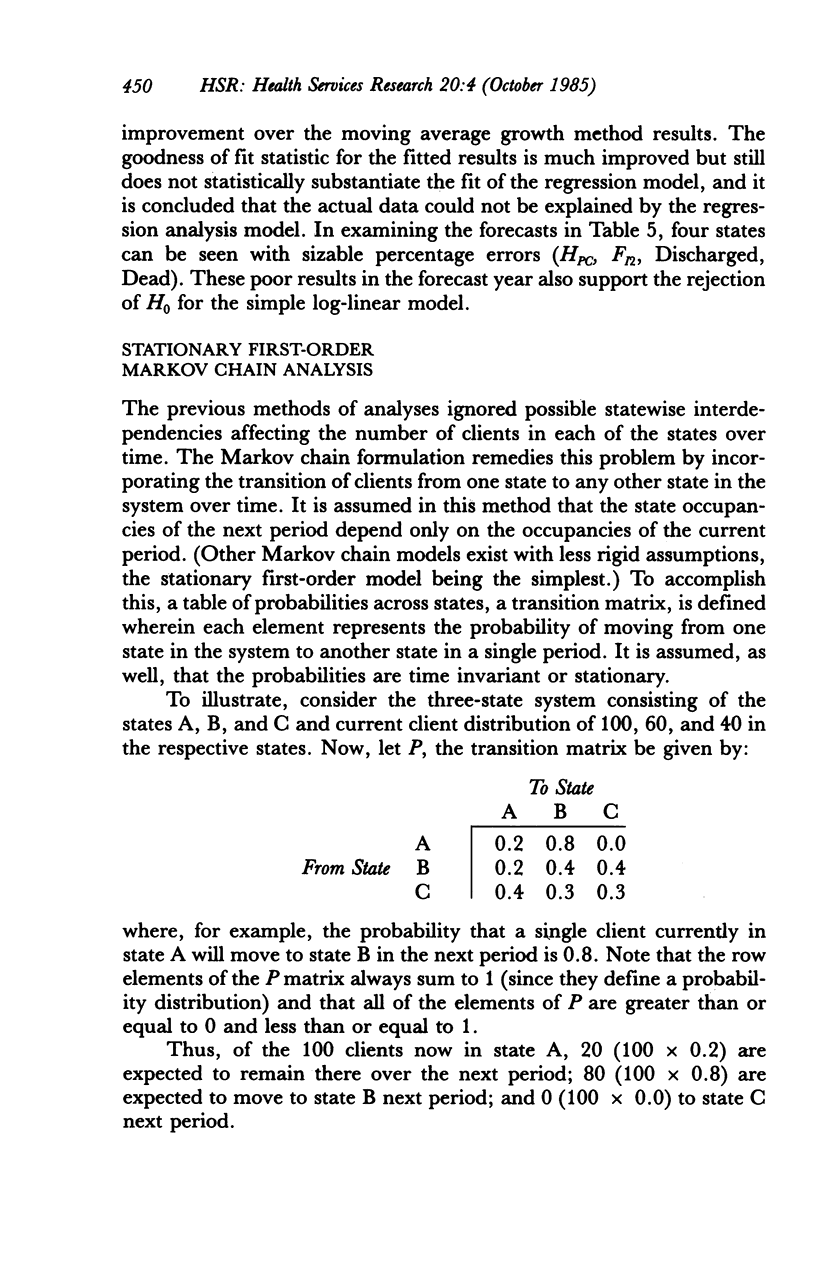
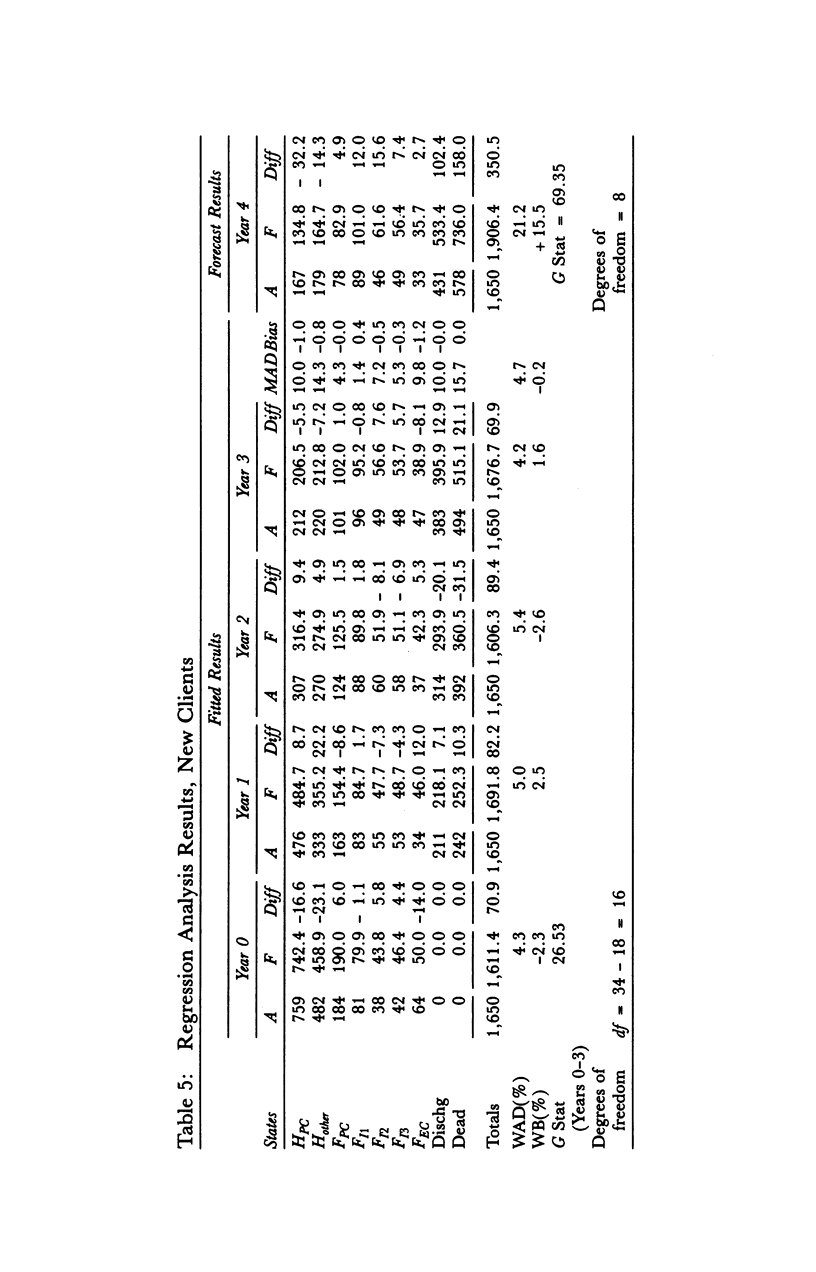
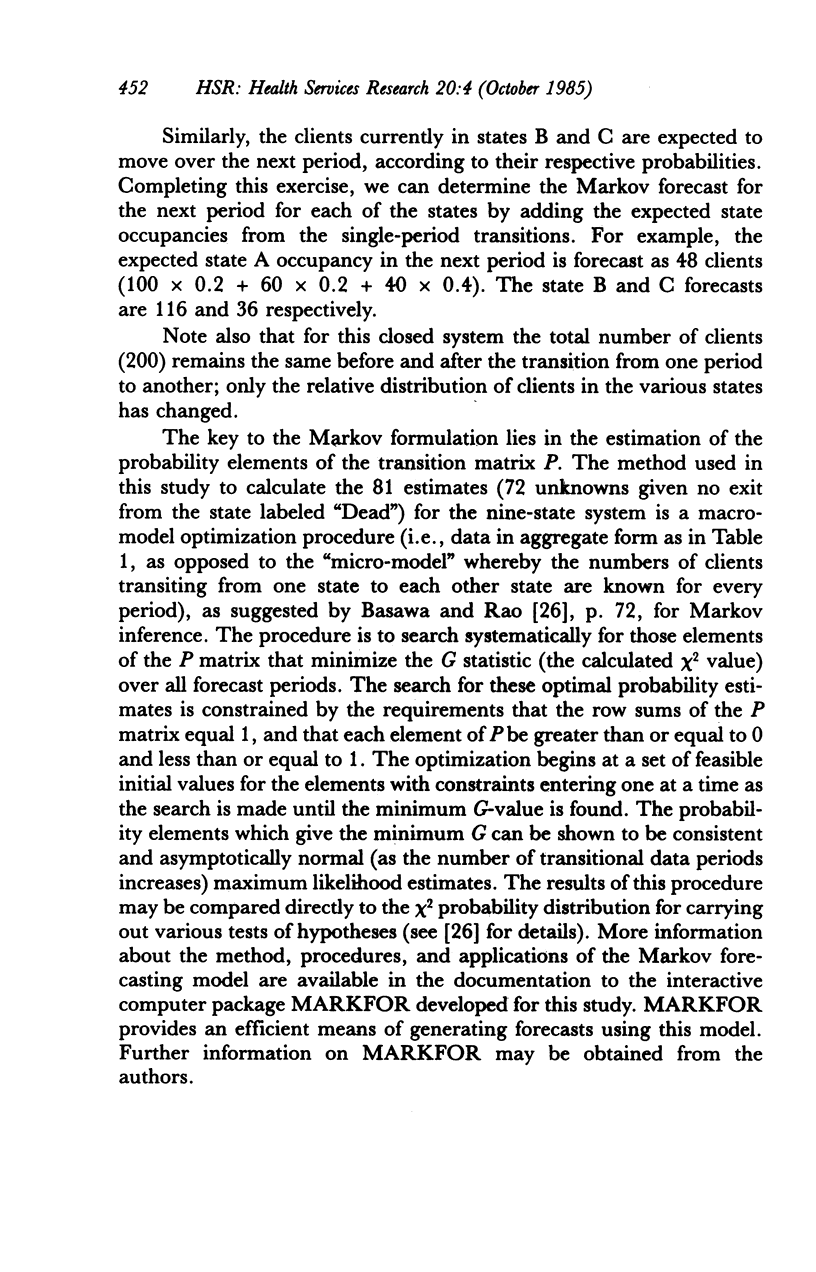

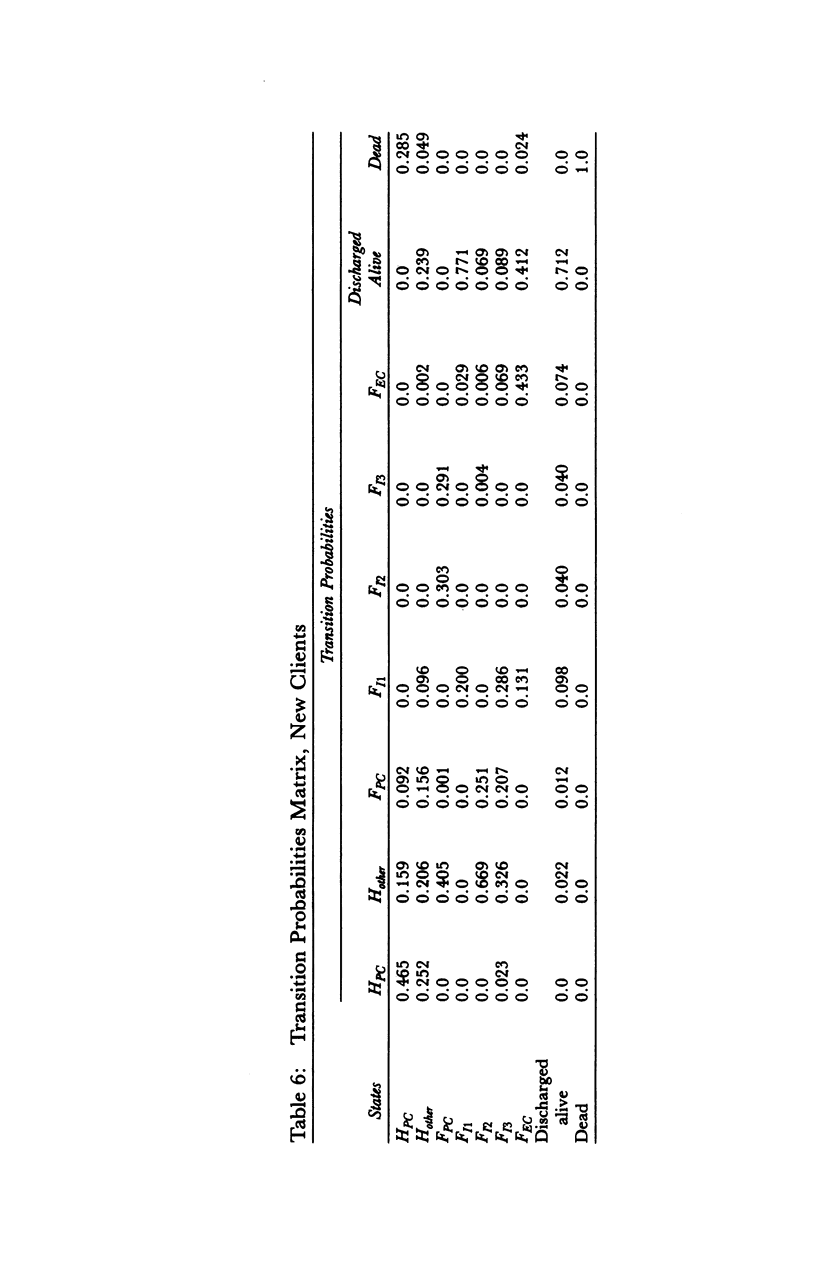
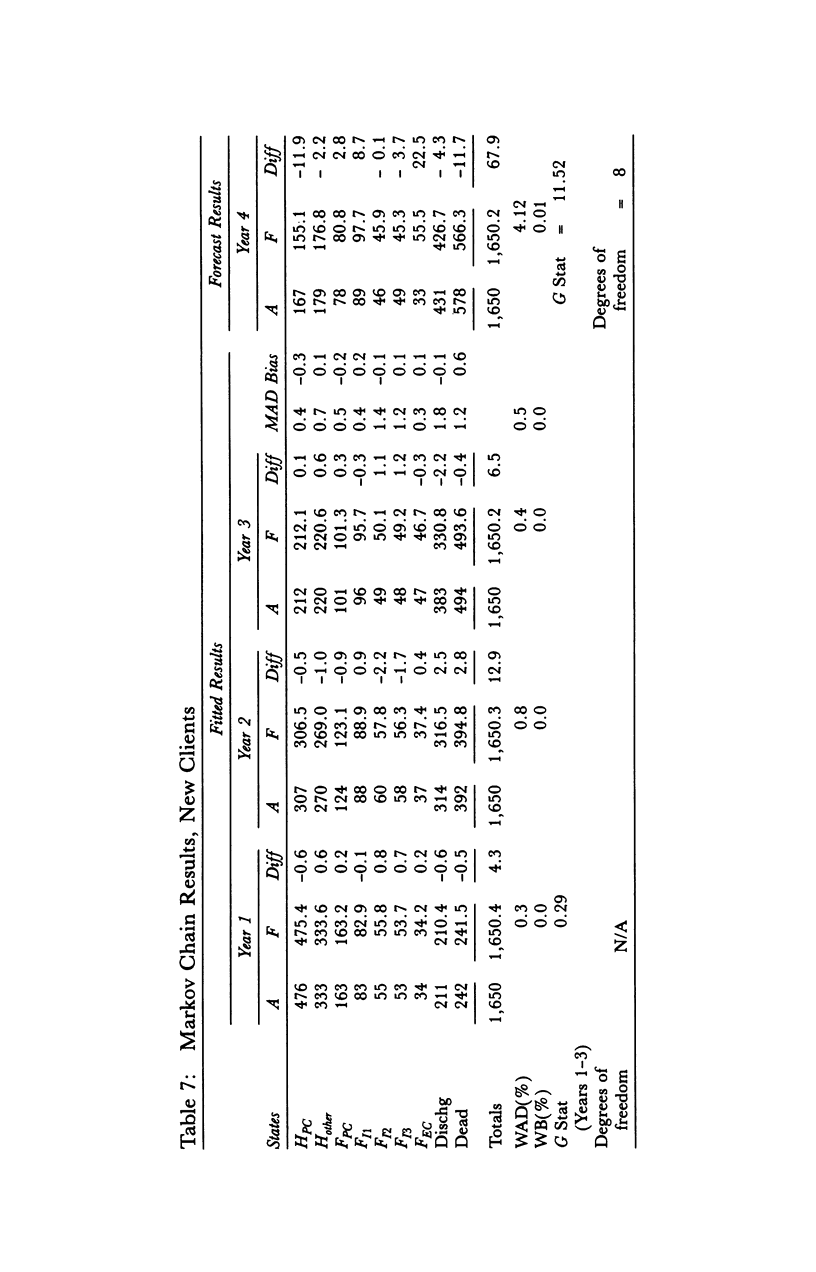




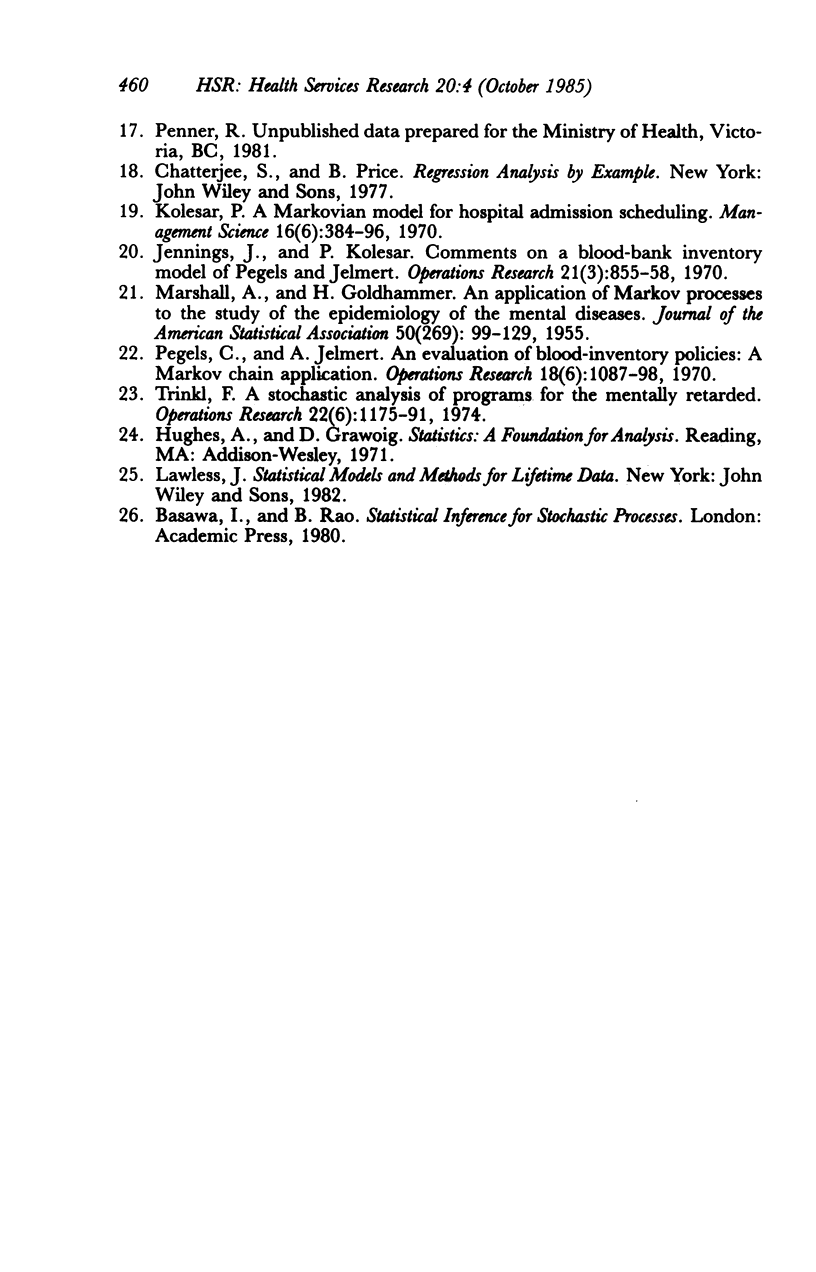
Selected References
These references are in PubMed. This may not be the complete list of references from this article.
- Bainbridge J. British Columbia's long-term care program: the first two years. Health Manage Forum. 1980 Summer;1(2):28–36. [PubMed] [Google Scholar]
- Dunlop B. D. Expanded home-based care for the impaired elderly: solution or pipe dream? Am J Public Health. 1980 May;70(5):514–519. doi: 10.2105/ajph.70.5.514. [DOI] [PMC free article] [PubMed] [Google Scholar]
- Eggert G. M., Bowlyow J. E., Nichols C. W. Gaining control of the long term care system: first returns from the ACCESS experiment. Gerontologist. 1980 Jun;20(3 Pt 1):356–363. doi: 10.1093/geront/20.3_part_1.356. [DOI] [PubMed] [Google Scholar]
- Kane R. L., Kane R. A. Long-term care: can our society meet the needs of its elderly? Annu Rev Public Health. 1980;1:227–253. doi: 10.1146/annurev.pu.01.050180.001303. [DOI] [PubMed] [Google Scholar]
- Keeler E. B., Kane R. L., Solomon D. H. Short- and long-term residents of nursing homes. Med Care. 1981 Mar;19(3):363–370. doi: 10.1097/00005650-198103000-00011. [DOI] [PubMed] [Google Scholar]
- Liu K., Manton K. G. The characteristics and utilization pattern of an admission cohort of nursing home patients (II). Gerontologist. 1984 Feb;24(1):70–76. doi: 10.1093/geront/24.1.70. [DOI] [PubMed] [Google Scholar]
- Liu K., Manton K. G. The characteristics and utilization pattern of an admission cohort of nursing home patients. Gerontologist. 1983 Feb;23(1):92–98. doi: 10.1093/geront/23.1.92. [DOI] [PubMed] [Google Scholar]
- Mackeprang B., Brauer E. Changes in age and need for care among patients in a geriatric institution during a two-year period. Scand J Soc Med. 1977;5(2):67–72. doi: 10.1177/140349487700500203. [DOI] [PubMed] [Google Scholar]
- Menken J. A., Sheps M. C. On relationships between longitudinal characteristics and cross-sectional data. Am J Public Health Nations Health. 1970 Aug;60(8):1506–1514. doi: 10.2105/ajph.60.8.1506. [DOI] [PMC free article] [PubMed] [Google Scholar]
- Roos N. P., Shapiro E. The Manitoba longitudinal study on aging: preliminary findings on health care utilization by the elderly. Med Care. 1981 Jun;19(6):644–657. doi: 10.1097/00005650-198106000-00007. [DOI] [PubMed] [Google Scholar]


